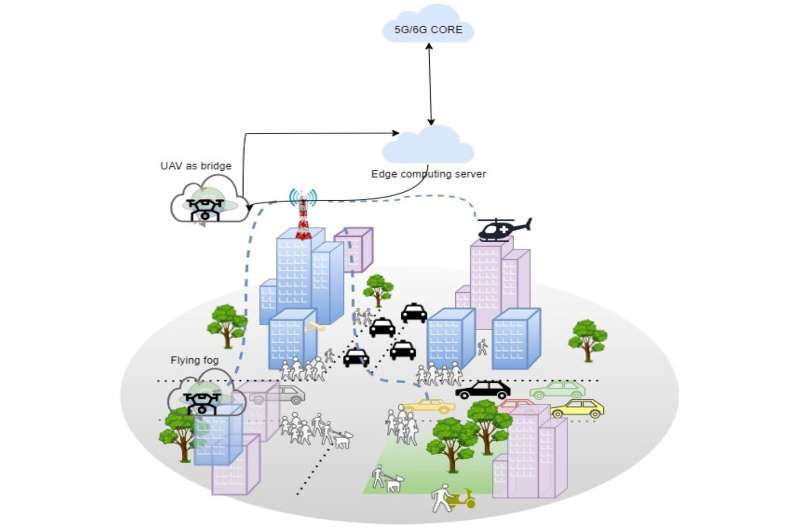This article has been reviewed according to Science X's editorial process and policies. Editors have highlighted the following attributes while ensuring the content's credibility:
fact-checked
trusted source
proofread
Researchers propose new scheme for Internet of Things that uses fog computing

Researchers from RUDN University have proposed a new scheme for the Internet of Things network. It uses flying drones that process data instead of cloud data centers, which speeds up the network. The results were published in Drones.
The Internet of Things (IoT) will connect user devices with everyday household and professional devices. The difficulty now is that the balance between functionality and energy efficiency has not been found. To solve this problem, the researchers proposed using a new type of network architecture—fog computing.
"IoT offers promising opportunities. But to deploy and manage such a network, several issues need to be addressed. One of the main tasks is to ensure 5G/6G coverage and network availability.
"IoT devices are often resource-limited, especially in terms of power. Therefore, the balance between functionality and energy efficiency must be a delicate compromise. Especially for battery-powered devices or those installed in hard-to-reach places," Ammar Muthanna, Ph.D., Director of the Scientific Center for Modeling Wireless 5G Networks at RUDN University said.
Researchers have proposed using so-called flying fog computing. This is something in between cloud computing when all the main work is done at a remote center, and conventional computing on end devices. In fog architectures, data storage and processing occurs at an additional layer between the cloud data center and other network elements.
The flying fog computing proposed by the researchers implements drones. They move to where the data needs to be processed. As a result, network latency is reduced and network reliability and speed are improved.
The team compared the operation of fog computing on drones with a conventional IoT network. The average latency in both cases depended on the number of network nodes but was always lower in the drone network. For example, at 500 nodes the latency was almost halved. At 100 nodes the difference is barely noticeable, but it still argues in favor of flying fog computing.
"Flying fog computing is a promising solution. We have shown their advantages compared to traditional schemes. The new data exchange model takes full advantage of the potential of such a network; it has surpassed traditional static edge computing—it reduces the average latency," Ammar Muthanna, Ph.D., Director of the Scientific Center for Modeling Wireless 5G Networks at RUDN University said.
More information: Wei Min et al, Dynamic Offloading in Flying Fog Computing: Optimizing IoT Network Performance with Mobile Drones, Drones (2023). DOI: 10.3390/drones7100622



















